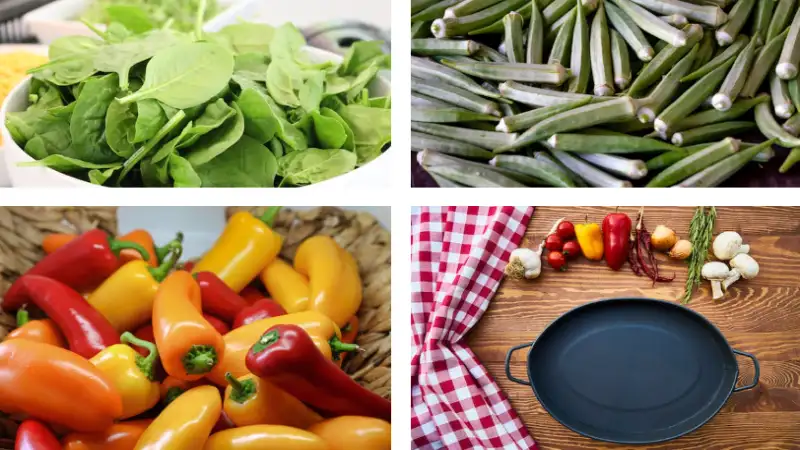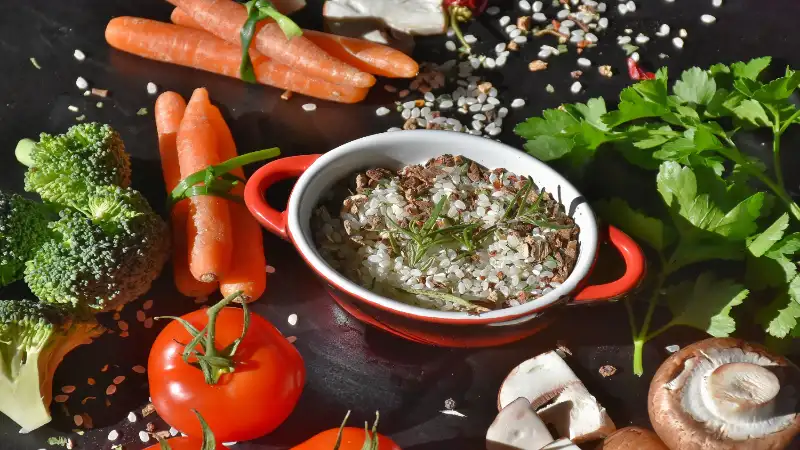In the culinary world, green, healthy cooking is a beacon of well-being and environmental responsibility. Green healthy cooking habits use wholesome ingredients and mindful practices. This extends a nurturing hand to our planet, going beyond personal health.
1. Benefits of Green Healthy Cooking
A. Personal Health Benefits
- Fresh, Organic Ingredients
- Embrace the vitality of organic produce for optimal nutrition.
- Reduction of Harmful Chemicals
- Eliminate harmful chemicals and additives, safeguarding your well-being.
- Increased Nutrient Consumption
- Elevate your nutrient intake with antioxidant-rich meals.
B. Environmental Benefits
- Decreased Carbon Footprint
- Make a positive impact by reducing your culinary carbon footprint.
- Preservation of Natural Resources
- Champion the preservation of vital natural resources.
- Reduction of Food Waste
- Minimize food waste through mindful cooking and meal planning.

2. How to Implement Green Healthy Cooking Practices
A. Choosing Ingredients
- Opt for Organic and Local Produce
- Prioritize local and organic ingredients for a sustainable kitchen.
- Use Sustainable Seafood and Ethically Raised Meat
- Support sustainable practices in seafood and meat production.
- Minimize Processed and Packaged Foods
- Choose whole foods over processed options for a healthier lifestyle.
B. Cooking Methods
- Utilize Energy-Efficient Appliances
- Conserve energy with efficient kitchen appliances.
- Steam, Roast, or Grill Instead of Frying
- Embrace healthier cooking methods for flavorful dishes.
- Reduce Water Waste
- Practice water conservation by using minimal amounts during cooking.
C. Waste Reduction and Recycling
- Preserve Food Through Proper Storage and Meal Planning
- Minimize waste by storing food properly and planning meals.
- Compost Food Scraps and Vegetable Peels
- Convert kitchen waste into nutrient-rich compost.
- Recycle Packaging Materials
- Contribute to recycling efforts by responsibly disposing of packaging materials
3. Green Healthy Cooking Recipes and Tips
A. Seasonal Recipes
- Utilize In-Season Ingredients
- Craft flavorful dishes using ingredients at the peak of freshness.
- Create Salads and Stir-Fries with Seasonal Produce
- Explore the vibrant world of salads and stir-fries with seasonal bounty.
- Experiment with New Combinations
- Unleash creativity by experimenting with unique vegetable and herb combinations.

B. Healthy Substitutions
- Replace Butter with Healthier Alternatives
- Opt for olive oil or avocado as heart-healthy alternatives.
- Substitute Refined Sugars with Natural Sweeteners
- Sweeten recipes with natural alternatives like honey or maple syrup.
- Use Whole Grain Flours
- Enhance nutritional content by choosing whole grain flours.
C. Portion Control and Balanced Meals
- Serve Appropriate Portion Sizes
- Promote portion control to avoid unnecessary food waste.
- Incorporate a Variety of Nutrient-Rich Foods
- Create well-rounded meals with a mix of fruits, vegetables, proteins, and grains.
- Emphasize Moderation and Balanced Nutrition
- Strive for a harmonious balance in your culinary choices.
you are interested in :

4. Conclusion
In conclusion, green healthy cooking is a journey of self-care. Environmental responsibility is intertwined with it. Recap the many benefits. Then, invite others to embrace these practices. They are for personal wellness and the sustainability of the planet. Let the call to action resonate: embark on the path of green healthy cooking today!

